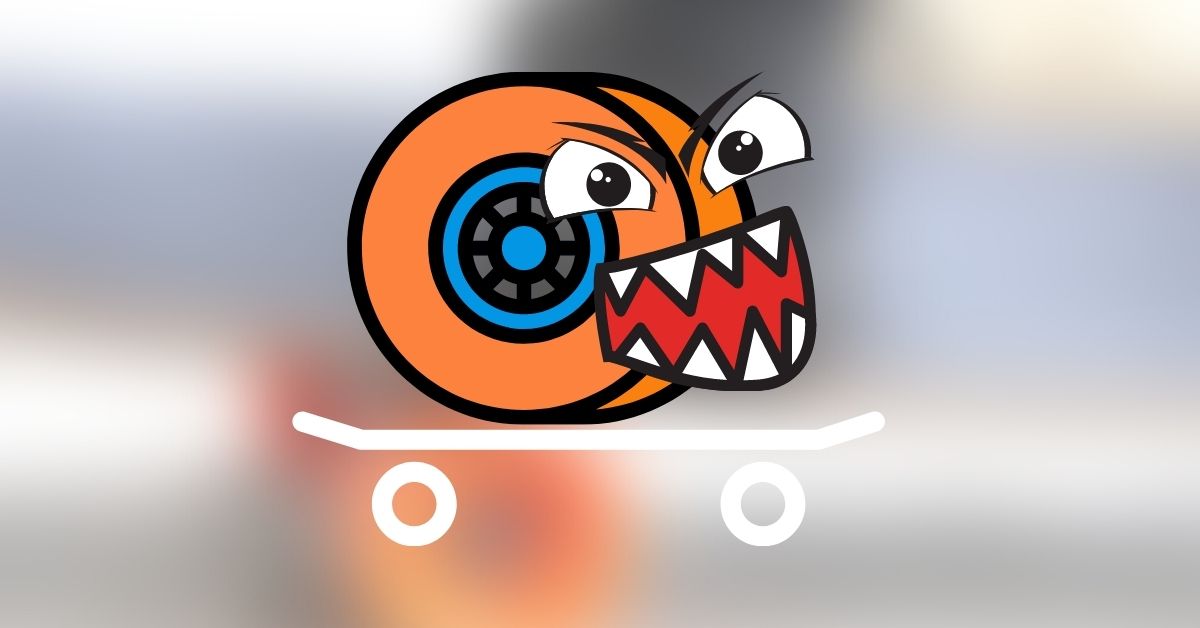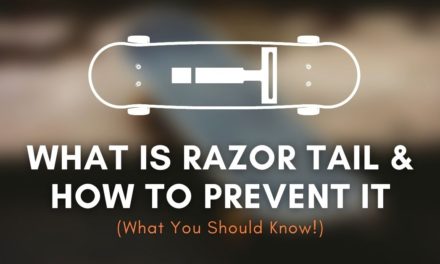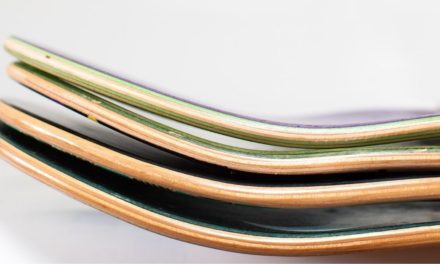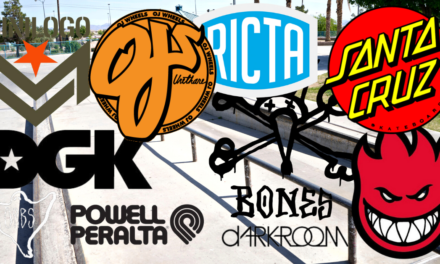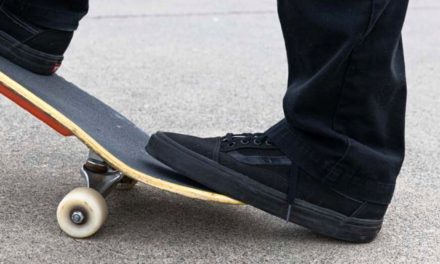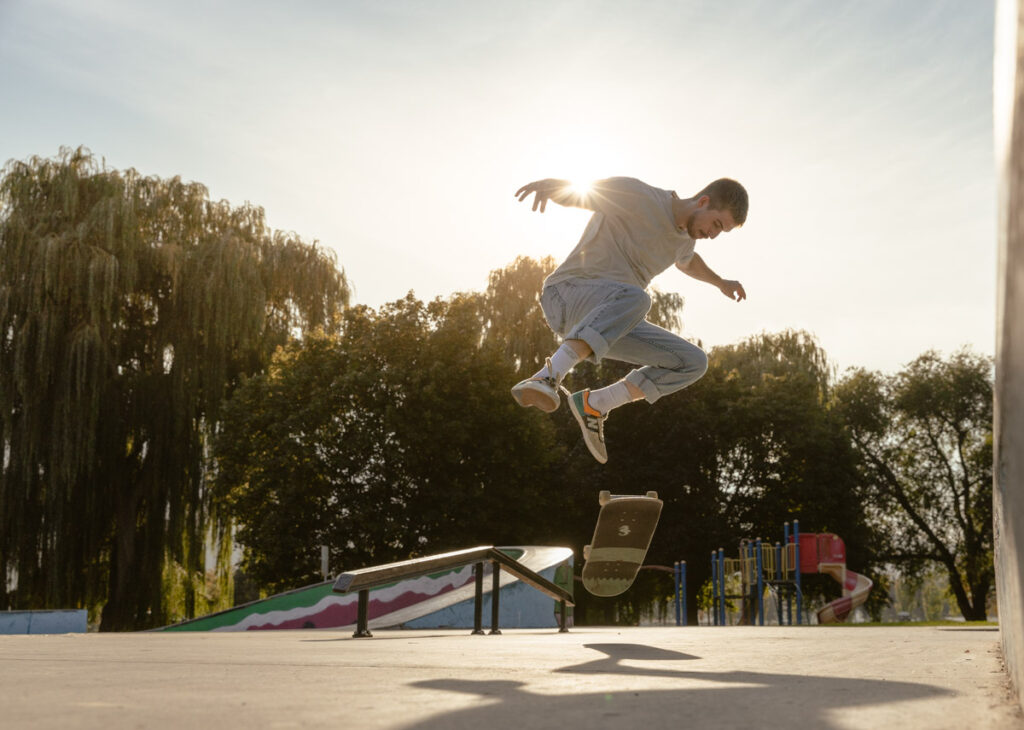Wheel bite is something I never thought about when I first started skateboarding. However, it quickly came to my attention after my board seemed to stop in its tracks each time I landed a trick. Thinking there was something wrong with how I was skating, it wasn’t until someone said “oh man, you just got some wheel bite!” that I realized this was an avoidable problem.
Wheel bite occurs when the deck of the skateboard makes contact with one of the wheels, pinching it against the ground and preventing the wheel from moving. When this happens, your board comes to a sudden stop and will cause you to lose balance or fall off the board.
There are a handful of different reasons that will cause you to get wheel bite while you’re skateboarding, but luckily many are avoidable.
Is Wheel Bite Common?
If you look at anyone’s skateboard they’ve been riding for a while you’re almost guaranteed to see wheel bite marks on their deck.
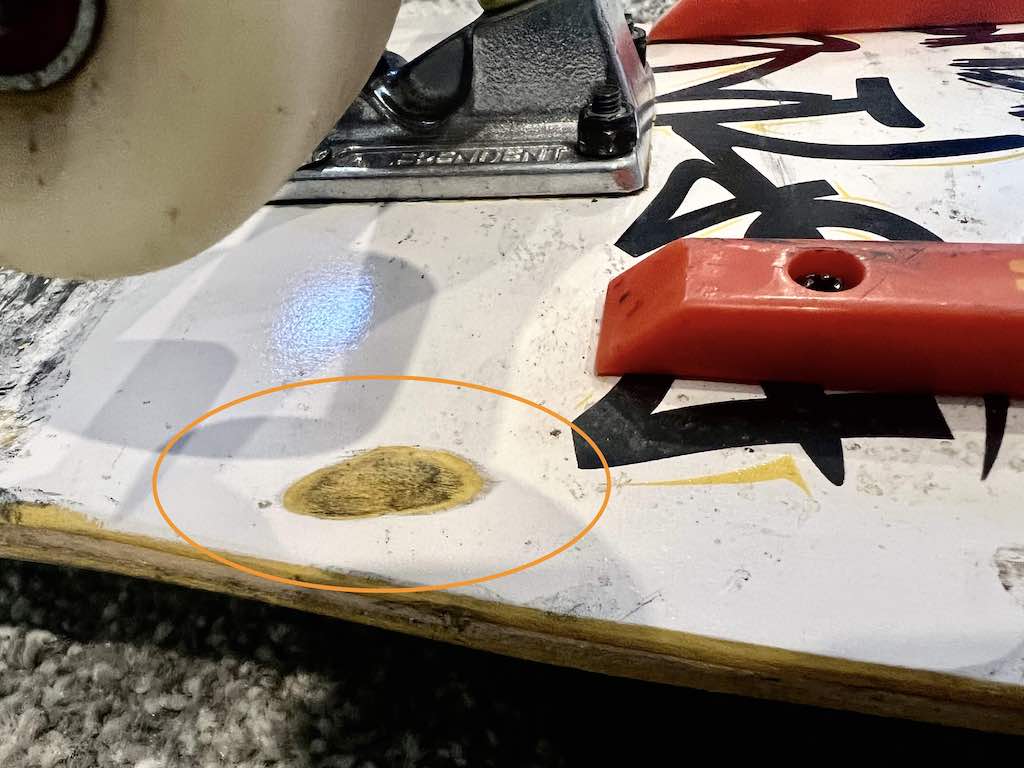
Even with every precaution in place to avoid wheel bite, it’s still relatively common if you land heavily on one side of your board for example. With enough force, your deck is going to pinch against your wheels from time to time.
When you notice yourself getting wheel bite one or two times, don’t overthink it too much as it was probably just a fluke. However, if you notice yourself getting wheel bite during every skate session, it’s time to consider making some changes.
How Much Space Should Be Between The Wheels And Board?
Unfortunately, there’s no exact amount of space that’s recommended between the wheel and the skateboard deck. That’s because there are so many variables in how close the deck can get to touching your wheels when you turn or land a trick.
For example, my cruiser skateboard seems to have a ton of space between the deck and the wheel.

However, it still can make contact when leaning hard into a turn.
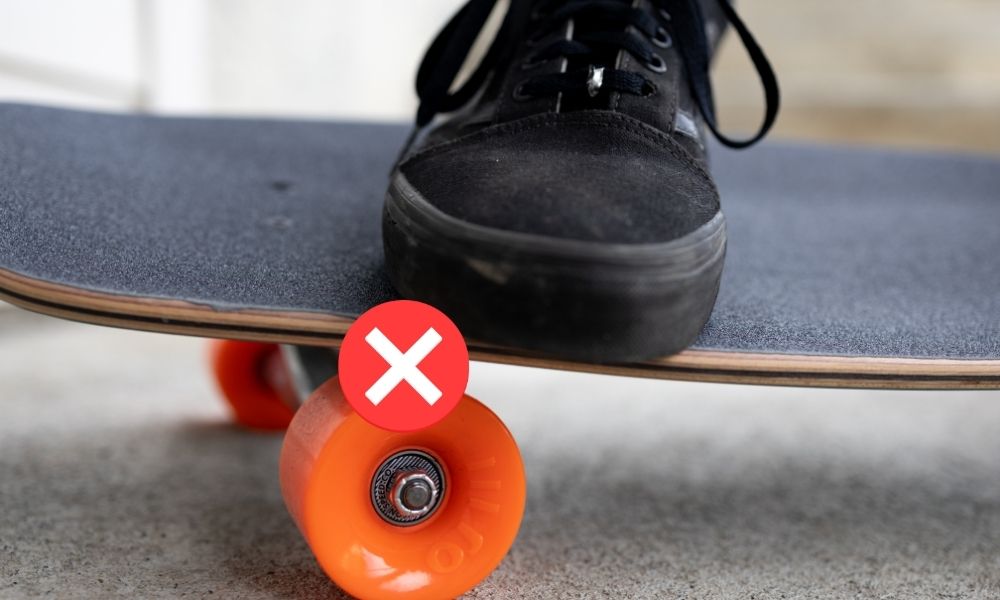
Ultimately, if you want to prevent wheel bite as best as possible, these next 5 tips are going to make the biggest difference.
5 Ways To Prevent Wheel Bite
1. Get Smaller Skateboard Wheels
The first thing that helps prevent wheel bite is getting a smaller diameter wheel. Regardless of your setup, smaller wheels simply give more space between the deck and wheel, therefore lowering your chances of getting wheel bite. Using wheels between 51mm and 53mm in diameter is your best bet for reducing your risk.
Now, this isn’t to say you should go to the skate shop and buy the smallest wheels you can find. Different wheel sizes will drastically affect how you skate, so you should consider what type of skating you do before replacing your wheels.

In a nutshell, larger wheels accelerate slower but hold speed better, while smaller wheels accelerate quickly but have a slower top speed. Wheel durometer also plays a factor in this to some extent, but wheel diameter is the biggest factor in relation to speed. The larger the wheel, the faster you go.
If you’re someone who skates flat ground and street, a smaller wheel will work since you don’t need to roll at the fastest speeds. Instead, a small wheel will be light and slightly easier to do tricks with, making it an obvious solution for avoiding wheel bite. I’d recommend a 51mm – 53mm wheel in this case.
Where things change is when it comes to bowl and transition skating. With this type of skating, holding speed is important for keeping your momentum as you carve and pump. Using larger wheels makes life a lot easier to maintain that kind of speed.
In this case, switching to a smaller wheel isn’t worth the slower speeds even though you’d technically have a lower chance of wheel bite. Just going from a 55mm-56mm wheel to a 51mm wheel would be very noticeable in terms of speed, and you’d probably regret your wheel purchase pretty quickly.
So if buying a smaller set of wheels isn’t suited for your skating, try this next trick instead.
2. Tighten Your Trucks
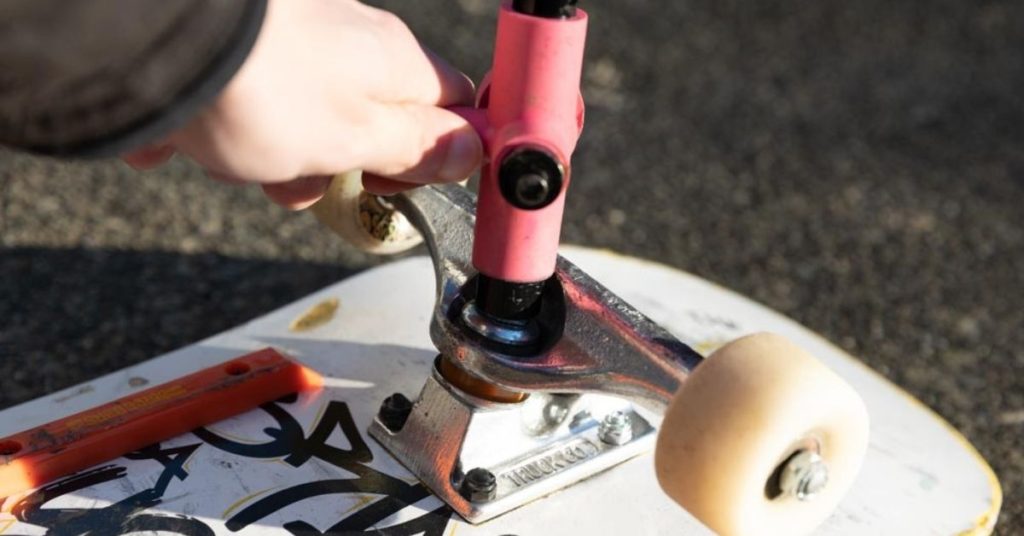
Rather than replacing your wheels, tightening your trucks can be a quick (and free) solution to preventing wheel bite. When your trucks are too loose they can move side to side with less resistance. When you put a lot of weight on one side with this lack of resistance, there’s a good chance your wheel will touch your deck, regardless of your wheel diameter.
By tightening your trucks you put more pressure on your bushings and increase the resistance your trucks have when they try to pivot. This will make your skateboard feel stiffer to turn at first, but with some getting used to this is an easy way to prevent wheel bite.
Now in some cases, you will tighten your trucks and still get wheel bite constantly. In that case, take a look at your bushings to find cracks or areas that look blown out. Old bushings don’t have as much strength to restrict your trucks, therefore giving you little results when you tighten them.

Luckily replacing your skateboard bushings is very easy and can be done in a few minutes. Just undo your kingpin nut, pull off the bushings and hanger, and replace them with new ones!
3. Replace Your Bushings With A Harder Set
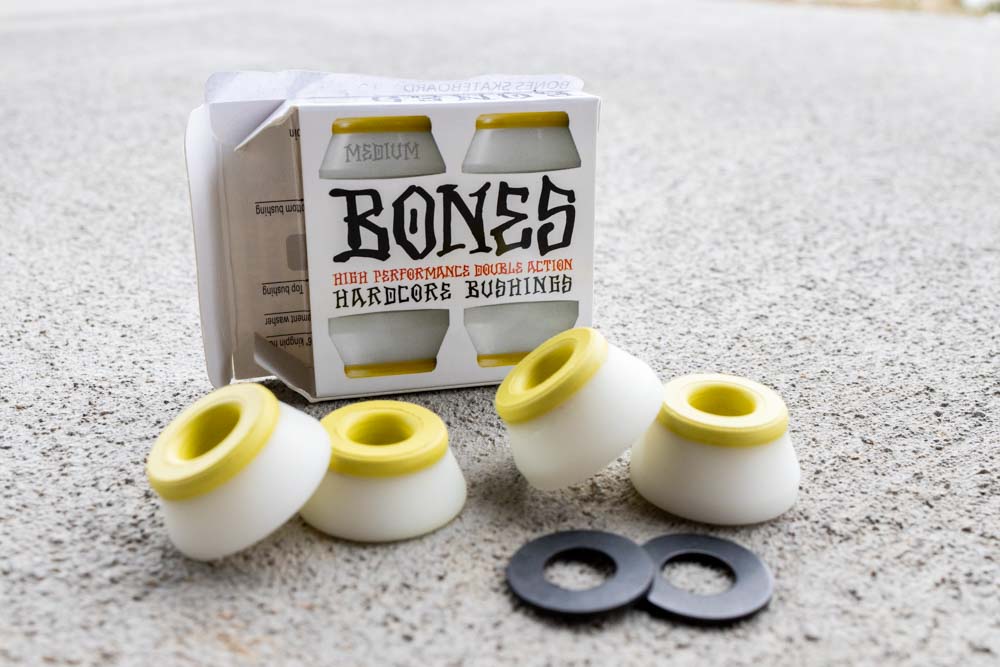
Now even if your bushings are in good shape, the hardness of your bushing may not be suited for your weight or skating style. In this situation, tightening your trucks won’t make as big of a difference as you’d hope for. By replacing your bushings with something harder, you’ll get far more resistance in your trucks to help prevent wheel bite altogether.
Here’s a table to help make bushing hardness in relation to weight and skating style simple:
| Bushing Hardness | Best For | Truck Feel | Recommended Skater Weight |
|---|---|---|---|
| Soft Bushings (80a – 90a) | Lighter skaters | Loose | Up To 140lbs |
| Medium Bushings (90a – 96a) | General skateboarding, street, and bowl | Medium Tight | 140lbs – 190lbs |
| Hard Bushings (96a+) | Heavier skaters, skating big features | Tight | 190lbs+ |
Even if you’re a heavier skater like me (my mom just calls me big-boned), harder bushings will feel more like medium-hard bushings but still stiffen your trucks significantly.
I would recommend the Bones Hardcore Bushings (Hard) Bushings for harder bushings. For medium bushings go for the Bones Hardcore (Medium) Bushings, while for soft bushings I’d opt for the Independent Soft Bushings.
Now if you’ve tried a harder bushing in the past and it didn’t work for you, these Shorty’s Rock Hard Bushings will give you some extra hope.
4. Add Riser Pads To Your Skateboard
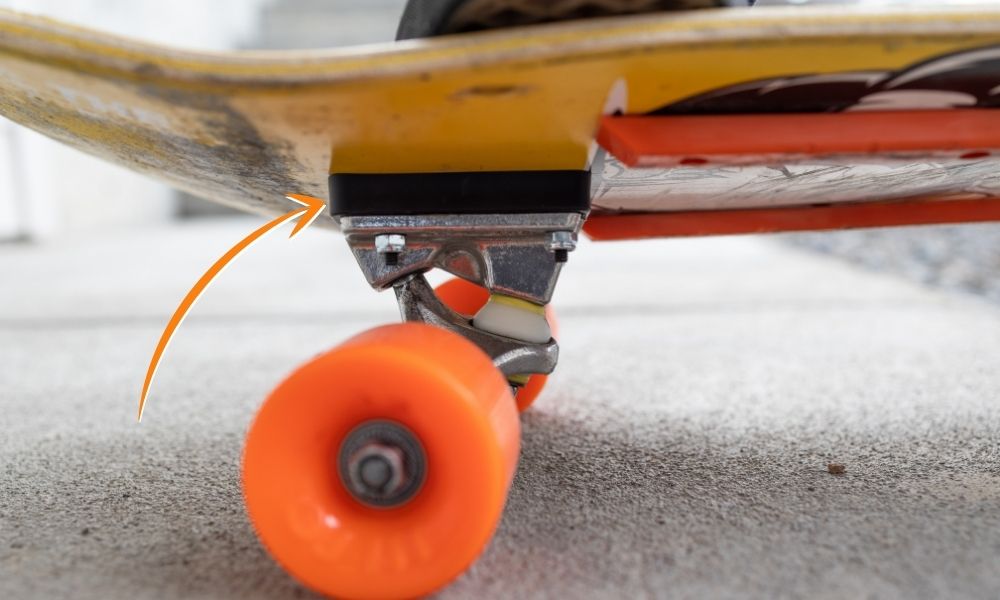
If you’re skating wheels above 55mm, getting riser pads will give you a fighting chance against wheel bite. For example, I’ve skated a 56mm wheel on my bowl setup, but found myself constantly getting wheel bite when landing airs to flat. After I installed a riser to give my wheels a bit of breathing room, it made a world of difference.
Riser pads are essentially a plastic block that mounts between your trucks and the deck. It creates extra space for your wheels by lifting up your deck, therefore allowing you to fit larger wheels on your setup. Besides creating more space, they also work well to prevent pressure cracks in your deck from hard impacts.
There are three different sizes of riser pads which are 1/8″, 1/4″, and 1/2″. Each one, as you probably guessed, raises your board based on the thickness of the pad. If you decide to install a riser pad on your skateboard, remember to consider the length of your hardware to make it work!
| Riser Pad Size | Required Hardware Length |
|---|---|
| No Risers | 1″ Hardware |
| 1/8″ Riser | 1 1/8″ Hardware |
| 1/4″ Riser | 1 1/4″ Hardware |
| 1/2″ Riser | 1 1/2″ Hardware |
With thicker riser pads comes a higher center of gravity which will make certain tricks feel a lot harder than you remember. Especially if you’re just getting into skateboarding, riser pads can make you feel a bit wobbly and off-balance at first. That’s why most people opt to use a smaller riser pad (1/8″) for any type of trick skating while opting for a larger one when using a board primarily for cruising.
Understanding Wheel Diameter & Riser Pads
Now you’re likely wondering what wheel size a riser pad will help you fit on your skateboard; so let’s make it easy.
| Riser Pad Size | Recommended Wheel Diameter |
|---|---|
| No Riser | 51mm – 55mm |
| 1/8″ Riser | 55mm – 57mm |
| 1/4″ Riser | 57mm – 60mm |
| 1/2″ Riser | 60mm+ |
Just remember that anything larger than 70mm isn’t going to fit on your skateboard, even with 1/2″ risers installed. To be safe, give yourself a max of 68mm if you’re shopping for larger wheels.
5. Get A Deck With Wheel Wells
The final option to avoid wheel bite is to get a skateboard deck with wheel wells carved into it. For regular skateboard decks, there are rarely decks that have true wheel wells like that of a longboard. However, there are decks with sanded-down wheel wells to help fit larger wheels with a lesser risk of wheel bite.
The downside to these skateboard decks is they aren’t typically designed for trick skating. They often have a directional shape with far less concave than your standard popsicle shape deck. For cruising around town these are a great deck to go with, but for anything related to flat ground, street, or bowl, these probably aren’t ideal.
Now with these five different tricks, you can mitigate wheel bite on your skateboard as much as possible. Unfortunately, even with the perfect setup, you can still get wheel bite from time to time and it’s just a part of skateboarding. If you’re getting wheel bite on a regular basis, definitely take a look at your setup and see what things can be improved, whether that be wheel size, truck tightness, different bushings, or installing riser pads.
Happy Shredding!
Brendan 🙂

